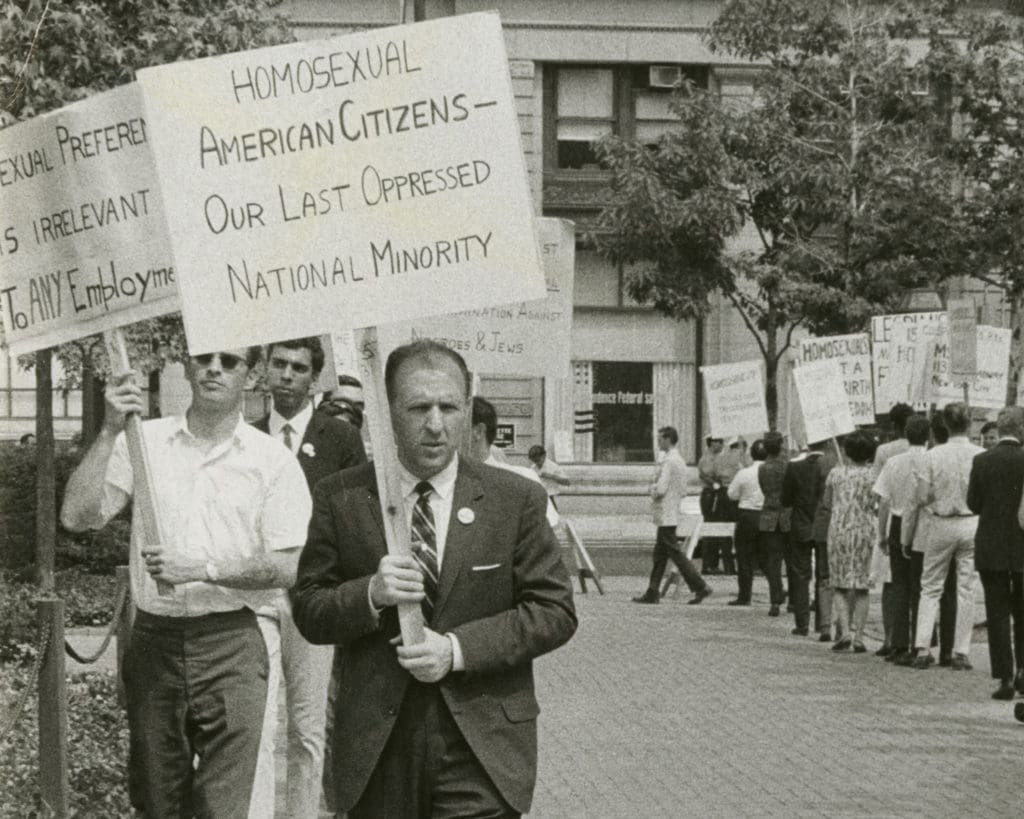
Despite recent setbacks in the queer community’s fight for equality, America has come a long way. Gay marriage was legalized in 2015 and half a dozen transgender people have been elected to office since 2016. However, as director Josh Howard’s new documentary The Lavender Scare reminds us, it wasn’t that long ago that discrimination against the gay community was so intense that members of the LGBTQ community were legally kept from holding government jobs.
Howard begins in 1953, when President Dwight D. Eisenhower signed Executive Order 10450, which was intended to allow the FBI to investigate and fire any federal employee who was deemed a security risk. Gays and lesbians were included under this order because their sexuality was seen as a liability because of its alleged potential for blackmail. For those not versed in queer history, the way Howard conveys the virulence of the homophobia fueling the discourse at the time is one of the film’s strongest aspects. Though it’s shocking to hear people like Eisenhower and Joseph McCarthy speak so openly against the “homosexual issue” or watch a PSA called Boys Beware that characterizes homosexuality as, “a sickness of the mind,” it’s the scenes where Howard focuses on stories of people affected by those discriminatory laws that are most effective.
One of the most compelling follows Joan Cassidy, who, like her parents and siblings, enlisted in the Navy. Despite living with her longtime partner at the time, she achieved the highest rank a woman could then receive in the Naval Reserve, Captain, and her fellow female naval officers wanted to push to make her the first female Admiral. “I’d wanted it so badly all of my life,” Cassidy explains, but she eventually made the decision to not pursue the promotion out of fear of being discovered.
However, while Howard’s storytelling is perfectly calibrated in that instance, the same unfortunately can’t be said about the way he handles the story that acts as the film’s framing device. From the beginning, Howard repeatedly presents excerpts from letters we eventually learn were written by Frank Kameny—whom the film later notes is considered the grandfather of the gay rights movement.
Interested in astronomy from a young age, Kameny was fired from his government job just as the Space Age was about to begin. Rather than accept his firing, though, Kameny decided to fight back, founding the D.C. chapter of the Mattachine Society, a proto-gay rights oganization that Kameny thought should engage in more activism. Kameny does exactly that, organizing picket lines in front of the White House and writing dozens of letters to politicians at the time. As Kameny himself claims in an interview filmed before his death in 2011, he brought militancy to the gay rights movement.
The statement seems self-aggrandizing, but David Johnson, author of The Lavender Scare, and John D’Emilio, a historian of gay rights, quickly support the claim and it’s easy to accept when Howard draws a line from what Kameny does in D.C. to what happens at Stonewall. Less clear is the connection to how Kameny’s actions contributed to other advances in gay rights. We know he’s an advocate, but we don’t get to hear much about his actual work until he helps NSA linguist, Jamie Shoemaker, win a wrongful termination suit in the mid-’80s. Kameny’s activism could likely fill its own movie and while it’s not Howard’s true subject here, not delving deeper into that history feels like both a missed opportunity and a choice that leaves the film‘s final scenes feeling too slight.
As various video clips and images play, Howard shows title cards that describe where each person featured ended up. While it’s nice to see many of them not only survived the Lavender Scare but thrived despite it, there’s a saccharine tone that feels like it ignores the ways the current critical climate threatens to roll back many of the advances Kameny and others fought to achieve. Still, perhaps Howard can be forgiven for ending The Lavender Scare on such a light and hopeful note. There may be so much work left for the queer community to do in the fight for equality, but it’s nice to be reminded that no matter how dark things may seem, change is possible.
The Lavender Scare opens in NY and LA on Friday.
https://www.youtube.com/watch?v=o8RPs-xrjks&feature=youtu.be

